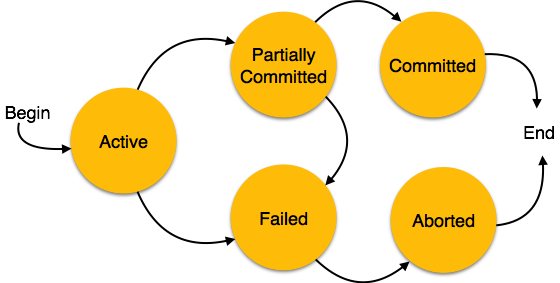Properties of Transactions
A transaction can be defined as a group of tasks. A single task is the minimum processing unit which cannot be divided further.
Let’s take an example of a simple transaction. Suppose a bank employee transfers Rs 500 from A’s account to B’s account. This very simple and small transaction involves several low-level tasks.

A’s Account
Open_Account(A)
Old_Balance = A.balance
New_Balance = Old_Balance – 500
A.balance = New_Balance
Close_Account(A)
B’s Account
Open_Account(B)
Old_Balance = B.balance
New_Balance = Old_Balance + 500
B.balance = New_Balance Close_Account(B)
Properties of Transactions
ACID Properties
A transaction is a very small unit of a program and it may contain several lowlevel tasks. A transaction in a database system must maintain Atomicity, Consistency, Isolation, andDurability − commonly known as ACID properties − in order to ensure accuracy, completeness, and data integrity.
- Atomicity − This property states that a transaction must be treated as an atomic unit, that is, either all of its operations are executed or none. There must be no state in a database where a transaction is left partially completed. States should be defined either before the execution of the transaction or after the execution/abortion/failure of the transaction.
- Consistency − The database must remain in a consistent state after any transaction. No transaction should have any adverse effect on the data residing in the database. If the database was in a consistent state before the execution of a transaction, it must remain consistent after the execution of the transaction as well.
- Durability − The database should be durable enough to hold all its latest updates even if the system fails or restarts. If a transaction updates a chunk of data in a database and commits, then the database will hold the modified data. If a transaction commits but the system fails before the data could be written on to the disk, then that data will be updated once the system springs back into action.
-
Isolation − In a database system where more than one transaction are being executed simultaneously and in parallel, the property of isolation states that all the transactions will be carried out and executed as if it is the only transaction in the system. No transaction will affect the existence of any other transaction.

